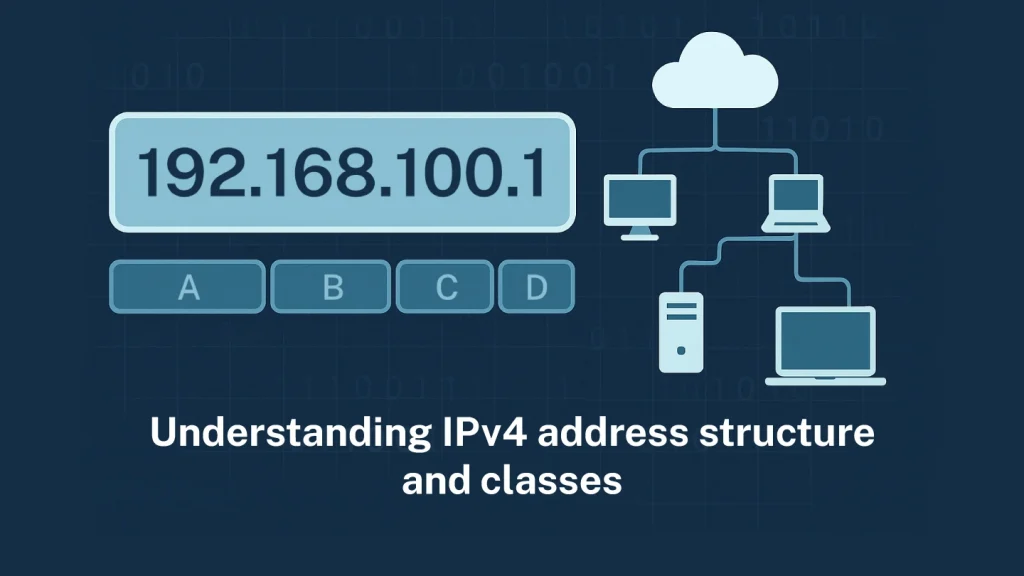Classless Inter-Domain Routing (CIDR) has emerged as a crucial resource for Internet Service Providers (ISPs) and businesses aiming to improve their network routing efficiency. By facilitating more effective allocation of IP addresses and minimizing the dimensions of routing tables, CIDR significantly boosts network performance and scalability. This article explores the factors contributing to the extensive implementation of CIDR and its influence on contemporary networking.
The origins and evolution of CIDR
In the initial phase of the Internet, IP addresses were distributed according to a classful system that categorized them into three main classes: Class A, Class B, and Class C. Each class was assigned a specific number of bits for the network and host segments of the address. For instance, Class A addresses featured an 8-bit network segment and a 24-bit host segment, which permitted a vast number of hosts but restricted the number of networks. Class B addresses comprised a 16-bit network segment and a 16-bit host segment, whereas Class C addresses included a 24-bit network segment and an 8-bit host segment. Although this system was simple, it proved to be highly inefficient, frequently resulting in considerable IP address wastage.
As the Internet rapidly expanded in the late 1980s and early 1990s, the limitations of the classful addressing system became increasingly evident. This swift growth led to a concerning depletion of the IP address space. In response, network engineers recognized the need for a more flexible and efficient approach to IP address management, culminating in the development of Classless Inter-Domain Routing (CIDR).
Launched in 1993 by the Internet Engineering Task Force (IETF), Classless Inter-Domain Routing (CIDR) supplanted the traditional classful addressing system with a more adaptable method referred to as prefix-based addressing. Rather than adhering to rigid classes, CIDR employs variable-length subnet masking (VLSM) to distribute IP addresses according to specific requirements. This approach facilitates a more accurate and efficient utilization of IP address space.
How CIDR enhances routing efficiency
CIDR employs a notation that merges the IP address with the subnet mask into a unified string, exemplified by 192.168.1.0/24. The digit that follows the slash signifies the number of bits allocated for the network segment of the address. For instance, /24 indicates that the initial 24 bits are designated for the network, thereby reserving 8 bits for host addresses. This notation facilitates the establishment of subnets of diverse sizes, enhancing the efficiency of IP address distribution.
One of the key advantages of Classless Inter-Domain Routing (CIDR) is its capacity to minimize the size of routing tables. In a traditional classful addressing scheme, each subnet typically necessitates a distinct entry in the routing table, resulting in large and intricate routing tables. Conversely, CIDR facilitates route summarization, which consolidates multiple routes into a single entry. For instance, rather than enumerating individual subnets such as 192.168.1.0/24, 192.168.2.0/24, and 192.168.3.0/24, CIDR can encapsulate them into a unified entry like 192.168.0.0/22. This not only streamlines the routing table but also enhances routing efficiency, as routers can make routing decisions more swiftly with fewer entries to manage.
Real-World applications of CIDR
In practical applications, CIDR has demonstrated its immense value to both Internet Service Providers (ISPs) and businesses. For instance, ISPs utilize CIDR to distribute and consolidate IP address ranges, thereby enhancing the efficiency of network routing. By summarizing routes, ISPs can minimize the number of entries in their routing tables, which in turn boosts router performance and streamlines network administration.
Organizations utilize CIDR to segment extensive networks into smaller, more manageable subnets. This approach not only improves network efficiency but also facilitates easier management. For example, a large enterprise may implement CIDR to establish subnets for various departments, guaranteeing that each department receives the suitable quantity of IP addresses while avoiding the unnecessary consumption of address space.
According to networking expert Ivan Pepelnjak, “CIDR has been a game-changer for network engineers. It allows for a more efficient use of IP addresses, which is essential in today’s ever-expanding internet landscape.” Similarly, Laura Chappell, a networking specialist, notes that “the reduction in routing table size is one of the most significant benefits of CIDR. It not only makes routing more efficient but also improves the overall performance of the network.”
The impact on routing protocols
The adoption of CIDR has had a profound impact on routing protocols. One of the most significant changes is the ability to perform route summarisation. This feature allows multiple routes to be combined into a single entry in the routing table, significantly reducing its size and complexity. For example, instead of listing individual subnets, a network administrator can use a single CIDR block to summarise multiple subnets. This not only simplifies the routing table but also improves routing efficiency, as routers can make routing decisions more quickly with fewer entries to process.
One of the most important routing protocols affected by CIDR is the Border Gateway Protocol (BGP). BGP is the protocol used to exchange routing information between different networks on the Internet. With the introduction of CIDR, BGP has been able to scale more effectively, allowing it to handle the increasing complexity of the global Internet routing table. By using CIDR, BGP can summarise routes and reduce the number of entries it needs to manage, thereby improving its performance and scalability. This has been crucial in enabling the growth of the Internet and ensuring that routing information remains manageable and efficient.
CIDR vs. Classful addressing
The transition from classful addressing to CIDR represents a significant shift in how IP addresses are managed. Classful addressing, with its fixed classes of IP addresses, often led to inefficient use of address space. For example, a small organisation might be allocated a Class C block of 256 addresses, even if it only needed a fraction of that number. This resulted in significant wastage of IP addresses, as many addresses remained unused.
In contrast, CIDR offers a much more flexible and efficient approach to IP address allocation. By allowing for variable-length subnet masking, CIDR enables organisations to create subnets of different sizes based on their actual needs. This flexibility allows for more efficient use of IP addresses, reducing waste and ensuring that address space is utilised to its fullest potential.
To illustrate the difference between classful addressing and CIDR, consider the following example. Under classful addressing, a company with 100 devices might be allocated a Class C block of 256 addresses. This would result in 156 unused addresses, leading to significant wastage. With CIDR, however, the company could be allocated a /25 subnet, which provides 128 addresses. This allocation is much closer to the actual needs of the company, reducing wastage and ensuring more efficient use of the available address space.
Real-World examples of CIDR implementation
Many organisations have successfully implemented CIDR to optimise their IP address usage and improve network efficiency. One such example is a large university that faced challenges managing its IP address space due to the rapidly growing number of devices connected to its network. By transitioning to CIDR, the university’s IT department was able to allocate addresses more efficiently, creating subnets for different departments based on their actual needs. This not only reduced address waste but also simplified network management.
Another example is an Internet Service Provider (ISP) that served both urban and rural areas. The ISP encountered difficulties in address allocation due to the limitations of classful addressing. By adopting CIDR, the ISP was able to offer tailored services to different regions, ensuring that customers received the appropriate number of IP addresses without waste. This flexibility allowed the ISP to improve customer satisfaction and grow its subscriber base.
Challenges and considerations
While CIDR offers numerous benefits, it also presents some challenges. One of the main issues is the increased complexity in managing subnets. Unlike classful addressing, which has a straightforward structure, CIDR requires careful planning and documentation to avoid confusion. Additionally, some legacy systems may not fully support CIDR, leading to potential compatibility issues. Network administrators must ensure that all devices and systems within the network are compatible with CIDR to avoid disruptions.
The future of CIDR in networking
As the Internet continues to evolve, CIDR remains a crucial component of network design. With the increasing adoption of IPv6, CIDR principles are expected to play an even more significant role in managing the vast address space efficiently. Additionally, advancements in automation and artificial intelligence are likely to simplify CIDR deployment and management, further enhancing its effectiveness.
FAQs
1. What is CIDR?
CIDR, or Classless Inter-Domain Routing, is a method for allocating IP addresses and routing Internet Protocol packets. It allows for more efficient use of IP address space by eliminating the rigid class structure of traditional IP addressing.
2. How does CIDR improve IP address allocation?
CIDR allows for variable-length subnet masking, which enables networks to be divided into subnets of different sizes based on actual needs. This reduces waste and makes routing more efficient.
3. What are the benefits of using CIDR?
The benefits of CIDR include more efficient use of IP addresses, simplified routing tables, enhanced network flexibility, and improved scalability.
4. How do ISPs use CIDR?
ISPs use CIDR to allocate and aggregate IP address blocks, improving routing efficiency and reducing router load.
5. What is the primary advantage of using CIDR for ISPs?
The primary advantage of using CIDR for ISPs is the ability to efficiently manage IP address space and reduce routing table size, leading to improved routing performance and scalability.










Leave a Reply